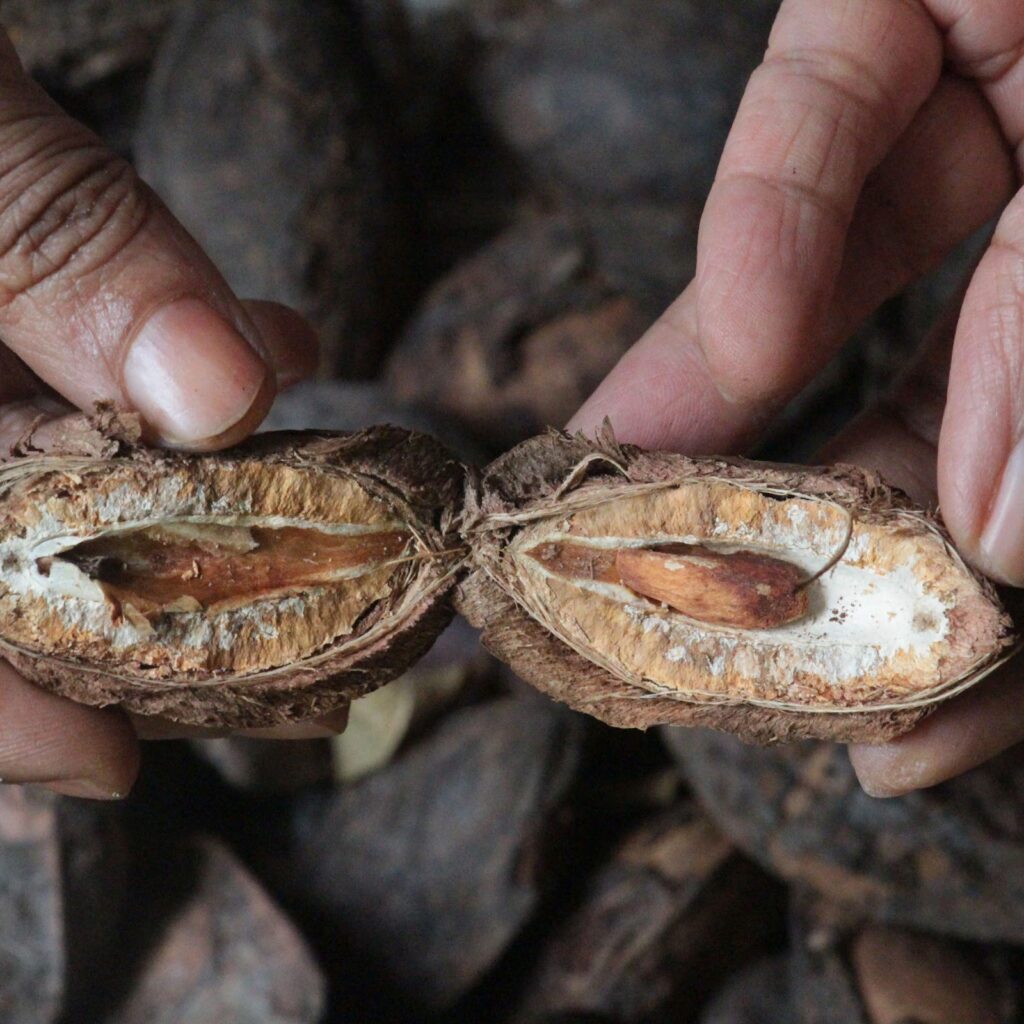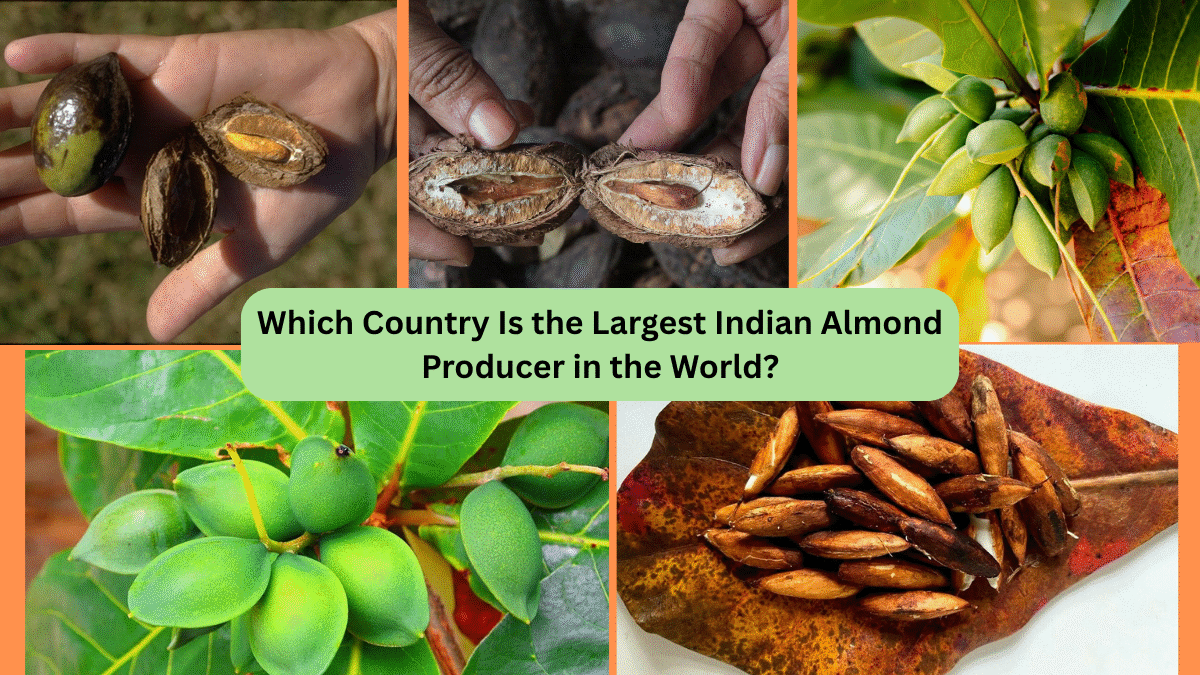Almonds are among the world’s most beloved nuts — known for their rich, nutty flavor, nutritional value, and versatility in everything from sweets to salads. But when it comes to Indian almonds, the term can be a little confusing. Are we talking about almonds cultivated in India or a specific species referred to locally as “Indian almond”? In this comprehensive article, we’ll clarify the difference, explain where Indian almonds are grown, and reveal which country leads the world in their production.
Understanding the Indian Almond

Before we explore production statistics, it’s important to clarify what we mean by Indian almond. Generally, this name refers to two things:
- Commercial almonds (Prunus dulcis) grown in India’s temperate regions — the same almond species cultivated worldwide.
- Terminalia catappa, also known as the tropical almond or Indian almond tree, native to South and Southeast Asia, with edible seeds inside its fruit.
For this article, we focus on Prunus dulcis almonds cultivated in India, often called Indian almonds in trade when grown locally, and identify the global leader in producing this variety.
Almond Cultivation: Where Do They Grow Best?
Almond trees thrive in regions with a Mediterranean climate — characterized by:
- Cool to cold winters
- Warm, dry summers
- Well-drained, sandy-loamy soil
This is why California, Spain, Italy, and Australia have become major almond-producing regions. In India, suitable zones are limited to high-altitude temperate regions, particularly in the north.
Global Almond Production Overview

Globally, the almond market is massive, valued at over USD 10 billion and growing steadily thanks to rising demand for healthy, plant-based foods. The top producers are:
- United States (California) — by far the largest, producing over 80% of the world’s almonds
- Spain
- Australia
- Iran
- Morocco
- India (in much smaller volumes)
Which Country Is the Largest Indian Almond Producer in the World?
If by Indian almond we mean the commercial almonds (Prunus dulcis) grown in India, then unsurprisingly, India itself is the largest producer of almonds within its borders. However, when compared to global leaders like the United States or Spain, India’s almond production is relatively small.
According to the latest data:
- India produces around 11,000 metric tons of almonds annually
- This accounts for less than 1% of global almond production
- Most of India’s domestic almond cultivation occurs in Jammu & Kashmir and Himachal Pradesh
Key Growing Regions in India:
- Jammu & Kashmir
- Accounts for over 90% of India’s almond production
- Favorable climate and high-altitude valleys make it ideal for almond cultivation
- Popular varieties: Shalimar, Makhdoon, Waris, California Paper Shell
- Himachal Pradesh
- Second-largest contributor, though production remains modest
- Almond orchards are typically smaller, family-run operations
- Uttarakhand and parts of Maharashtra
- Almond farming is being encouraged in select hilly areas
The United States: The Global Almond Powerhouse

When looking at worldwide production of almonds — the United States, specifically California, stands unrivaled.
- California alone produces over 1.3 million metric tons of almonds annually
- It controls 80-85% of global almond exports
- The industry covers more than 1.6 million acres of almond orchards
- Top exported to countries include India, China, Spain, and Germany
Why Is California So Successful at Almond Farming?
- Mediterranean climate: Warm, dry summers and mild winters
- Advanced irrigation systems: Essential for almond trees, which require significant water
- Large-scale mechanized farming
- High-yield cultivars and modern orchard management
- Robust export infrastructure and market demand
India itself imports a massive quantity of almonds from California — over 90% of its almond imports come from the U.S., making India one of the largest almond importers globally.
Native “Indian Almond” (Terminalia catappa): A Different Tree
It’s worth noting that the name Indian almond is also commonly used for Terminalia catappa, a large tropical tree native to India, Southeast Asia, and the Pacific.
- Grown primarily along coastal regions
- Produces flat, oval fruits containing a kernel inside
- Kernels have an almond-like taste but are not commercially produced at scale
- Used in traditional medicine and as shade trees
India and neighboring tropical countries like Sri Lanka, Indonesia, and the Philippines cultivate these trees, but no single country dominates large-scale production as it remains a wild or smallholder crop.
India’s Almond Import-Export Scenario

Due to limited domestic production, India relies heavily on imports to satisfy its growing demand for almonds:
- India imported over 137,000 metric tons of almonds in 2023, mostly from the U.S.
- Almond consumption is booming in India due to health trends, Ayurveda, and rising middle-class incomes
- Almonds are especially popular during festivals like Diwali and Ramadan
India has also begun exporting modest quantities of homegrown almonds to neighboring countries, but these remain niche compared to imported almonds.
Challenges Facing Almond Cultivation in India
While almond farming in India has potential, it faces several limitations:
- Limited suitable land
Only high-altitude regions offer appropriate conditions for commercial almond farming. - Water scarcity
Almond trees require significant irrigation, which can be challenging in dry, hilly terrains. - Small farm sizes
Orchards in Kashmir and Himachal are typically small, family-managed plots. - Competition from imports
Imported almonds, especially from California, are cheaper and larger in size. - Climatic vulnerabilities
Frosts, hail, and unseasonal rains can damage crops in Himalayan regions.
The Future of Almond Production in India

Despite these challenges, there’s growing interest in expanding almond cultivation:
- High-density plantation techniques being introduced in Kashmir
- Government subsidies and schemes to encourage orchard rejuvenation
- Research stations developing climate-resilient, high-yield almond varieties
- Emerging interest in growing almonds in parts of Uttarakhand, Maharashtra, and Karnataka
Though India’s contribution to global almond production may remain small, boosting domestic output can help reduce import dependency and support local farmers.
Conclusion
So, to answer the question — Which country is the largest Indian almond producer in the world?
Within India, it is naturally India itself, with Jammu & Kashmir and Himachal Pradesh leading the way.
Globally, however, the title of the largest almond producer (including almonds consumed in India) unquestionably belongs to the United States (California), producing over 1.3 million metric tons annually.
As India’s appetite for almonds continues to grow, both through increased imports and expanding domestic cultivation, the story of Indian almonds remains one of tradition, trade, and tremendous potential.




Leave A Comment